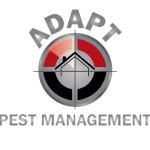In Roseville, Rocklin, and the Greater Sacramento area,, population growth has been on an upward trajectory. Building is also at an all time high as developers build more homes and commercial properties to cope with expanding demand for housing. While building can have important economic impacts, it also plays an undeniable role in the local environment.
Undeveloped environments can host a variety of animals. As the builders move in, those animals are forced to search elsewhere for food and shelter while they also avoid the construction activity. Oftentimes, this pushes the animals into adjacent residential areas where they invade yards and homes in their search for food.
Types of Wildlife Displaced During Construction
The grasses, trees, and rocks around Rocklin have long been a habitat for many local animals. While these wildlife are harmless in their own environment, they are a nuisance and potential danger when they live near homes. These animals include:
- Rats
- Mice
- Snakes
- Raccoons
- Bats
- Birds
Because the typical habitats of these animals have been disturbed, they may be facing a lack of food that makes them more desperate and aggressive as they seek out . In certain neighborhoods, it can become dangerous to leave children or pets outside unattended while interior wildlife infestations cases rise.
How to Reduce Wildlife Invasions at Your Home
Preventing wildlife from getting into your home is the most effective method of handling animal invasions. Because animals can carry diseases, cause damage to your property, and are a headache to clean up after, keeping them from coming into your home at all is safer and more cost efficient.
With snakes, raccoons, and other larger wildlife that might endanger your children or pets, taking steps to prevent animals from getting into your backyard can give you added peace of mind.
Wildlife exclusion is a humane animal control method that will work at homes already dealing with an animal invasion and those seeking proactive prevention. With exclusion, we locate holes in foundations, roofing, siding, vents, and more where a small animal could squeeze through. We then seal these holes with materials like caulk, cement, or mesh screening.
We inspect your home for tree branches or electrical wires near your home that may help an animal gain access to your home. We also look for areas around your yard, such as unsecured trash, sheds, woodpiles, open decks, fruit trees, and other places that might attract nuisance wildlife. Combining maintenance with professional wildlife exclusion can help keep your home free of animals during any nearby construction.

